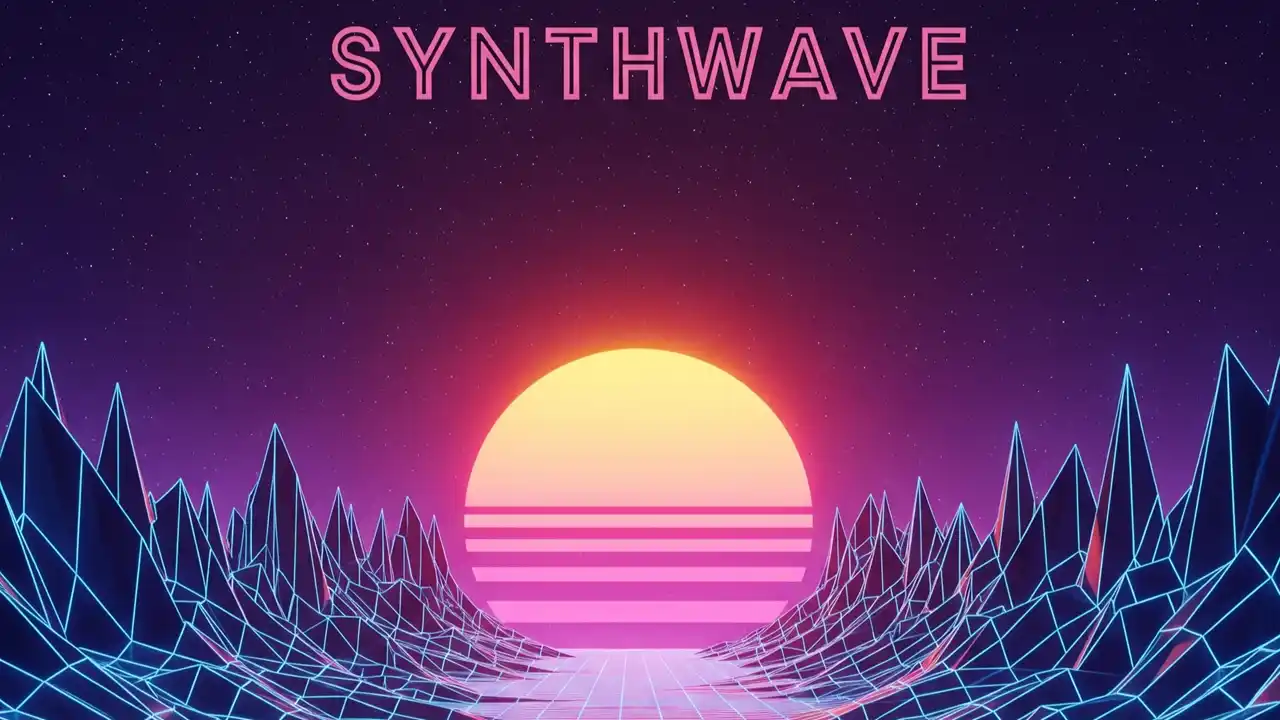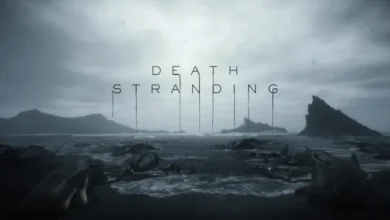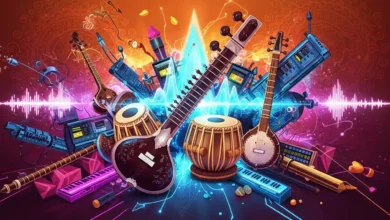In the ever-evolving landscape of music, few genres have captured the collective imagination quite like synthwave. With its pulsating beats, neon-drenched aesthetics, and an uncanny ability to transport listeners to a retro-futuristic world, synthwave has surged in popularity over the past decade. It’s a sound that feels both intimately familiar and thrillingly alien, evoking memories of a past that never quite existed. But what exactly is synthwave, where did it come from, and why does it resonate so deeply with modern audiences? Let’s dive into the glowing, nostalgic heart of this genre and explore its origins, its rise to prominence, and the surreal emotional pull that makes it so special.
The Origins of Synthwave: A Retro-Futuristic Dream
Synthwave, often referred to as retrowave or outrun, emerged in the mid-2000s as a love letter to the sounds and aesthetics of the 1980s. Its roots lie in the electronic music of that decade, drawing heavily from the synth-heavy soundtracks of films like Blade Runner, Tron, and The Terminator, as well as the iconic scores composed by artists like John Carpenter, Vangelis, and Tangerine Dream. These soundtracks, with their lush synthesizer melodies and driving rhythms, captured a vision of the future that was equal parts optimistic and dystopian—a perfect blend of hope and unease.
The genre also pulls inspiration from 1980s pop culture, including arcade games, neon-lit cityscapes, and the burgeoning world of personal computing. Early pioneers of synthwave, such as French artists Kavinsky and College, crafted music that felt like the soundtrack to a cyberpunk film that never existed. Kavinsky’s 2010 track “Nightcall,” famously featured in the film Drive, became a defining anthem of the genre, with its moody, pulsating basslines and haunting vocals. The song’s success helped catapult synthwave into the mainstream, introducing its retro-futuristic sound to a broader audience.
At its core, synthwave is a genre built on nostalgia—not just for the actual 1980s, but for an idealized, almost mythological version of the decade. It’s the sound of VHS tapes, CRT monitors, and neon-lit diners, but filtered through a modern lens. This blend of past and present creates a surreal, dreamlike quality that sets synthwave apart from other electronic music genres.
The Soaring Popularity of Synthwave
In recent years, synthwave has experienced a meteoric rise in popularity, finding a home in everything from Spotify playlists to blockbuster film soundtracks. Several factors have contributed to this surge, making it one of the most exciting musical movements of the 2020s.
1. The Nostalgia Boom
We live in an era obsessed with nostalgia. From remakes of classic films to retro-inspired video games like Cyberpunk 2077, modern culture is deeply invested in revisiting the past. Synthwave taps directly into this zeitgeist, offering a sonic escape to a time that feels simpler, yet endlessly futuristic. For millennials and Gen Z listeners, many of whom weren’t even born in the 1980s, synthwave provides a way to experience a romanticized version of a decade they never lived through. It’s nostalgia for a memory that isn’t theirs, which makes it all the more intoxicating.
2. The Visual Aesthetic
Synthwave isn’t just a sound—it’s a vibe. The genre is inseparable from its visual aesthetic: neon pinks and blues, wireframe graphics, palm trees silhouetted against a setting sun, and sleek sports cars speeding through a futuristic city. These images, often seen in album art and music videos, evoke a sense of place that feels both familiar and otherworldly. Artists like The Midnight, Gunship, and FM-84 pair their music with visuals that amplify the nostalgic, cinematic quality of their work, creating a multisensory experience that resonates deeply with fans.
3. The Rise of Streaming and Social Media
The accessibility of streaming platforms like Spotify, SoundCloud, and YouTube has played a massive role in synthwave’s rise. Curated playlists like “Synthwave/Retrowave” or “Chillwave” have millions of followers, introducing new listeners to the genre’s biggest names and up-and-coming artists. Meanwhile, platforms like X and TikTok have become breeding grounds for synthwave culture, with fans sharing lo-fi livestreams of neon cityscapes accompanied by synthwave tracks or creating retro-inspired content that captures the genre’s aesthetic. Hashtags like #synthwave and #retrowave have millions of views, showcasing the genre’s vibrant online community.
4. Cinematic and Gaming Influence
Synthwave’s cinematic roots have made it a natural fit for modern media. Films like Drive (2011), The Guest (2014), and Kung Fury (2015) have used synthwave soundtracks to enhance their retro-futuristic narratives, introducing the genre to new audiences. Similarly, video games like * Hotline Miami* and Far Cry 3: Blood Dragon have embraced synthwave’s pulsating energy, using it to create immersive, adrenaline-pumping experiences. These cultural touchstones have helped cement synthwave as a go-to sound for evoking a specific mood—one that’s equal parts nostalgic and forward-looking.
The Surreal Nostalgic Feeling: Why Synthwave Feels So Special
What makes synthwave truly unique is its ability to evoke a surreal, almost otherworldly sense of nostalgia. It’s not just about remembering the 1980s—it’s about conjuring a version of the past that feels more vibrant, more alive than reality ever was. This emotional resonance comes from several key elements of the genre.
1. A Blend of Familiarity and Alienation
Synthwave’s sound is rooted in the familiar—think the catchy synth melodies of 1980s pop or the driving rhythms of new wave bands like Depeche Mode. But there’s an undercurrent of unease, a sense that something is slightly off. The music often feels like it’s soundtracking a sci-fi thriller or a neon-lit dystopia, creating a tension between comfort and strangeness. This duality is what makes synthwave so captivating—it’s like stepping into a memory that’s been distorted by time and imagination.
2. The Power of Simplicity
At its core, synthwave is deceptively simple. Many tracks rely on repetitive, hypnotic basslines, lush pads, and soaring lead synths. This simplicity allows listeners to get lost in the music, letting their minds wander to imagined worlds. Unlike more complex genres, synthwave doesn’t demand active listening—it invites you to drift, to dream, to feel. This meditative quality makes it perfect for late-night drives, studying, or simply zoning out.
3. A Cinematic Escape
Synthwave feels like the soundtrack to a movie that only exists in your head. Its cinematic quality allows listeners to create their own narratives, whether it’s cruising through a neon-lit city in a sports car or exploring a cyberpunk underworld. This sense of escapism is particularly powerful in today’s fast-paced, often overwhelming world. Synthwave offers a refuge, a chance to step into a different reality where the stakes feel lower and the visuals are endlessly cool.
4. The Emotional Core
Despite its retro-futuristic sheen, synthwave is deeply emotional. Many tracks, particularly those by artists like The Midnight or Timecop1983, are infused with a sense of longing, melancholy, and hope. The lyrics often explore themes of love, loss, and the passage of time, wrapped in a sound that feels timeless. This emotional depth resonates with listeners, offering a cathartic release that’s both personal and universal.
The Future of Synthwave
As synthwave continues to grow, it’s evolving in exciting ways. New subgenres, like darksynth (think Carpenter Brut) and dreamwave (think FM-84), are pushing the boundaries of the genre, incorporating heavier beats or more ambient, atmospheric sounds. Meanwhile, artists are experimenting with live instrumentation, blending synths with guitars, drums, and vocals to create a more organic sound. Bands like The Midnight have even taken synthwave to the stage, performing sold-out shows that combine the genre’s retro aesthetic with the energy of a live rock concert.
The genre’s influence is also spreading beyond music. Synthwave-inspired art, fashion, and design are popping up everywhere, from retro-futuristic clothing lines to neon-lit coffee shops. The aesthetic has even infiltrated advertising, with brands using synthwave’s cool, nostalgic vibe to sell everything from cars to sneakers.
Conclusion: A Soundtrack for Dreamers
Synthwave is more than just a genre—it’s a cultural phenomenon that taps into our collective yearning for a past that never was and a future that might never be. Its soaring popularity is a testament to its ability to connect with listeners on a visceral, emotional level, offering a sonic escape that feels both nostalgic and forward-looking. Whether you’re a longtime fan or a newcomer discovering the genre through a late-night Spotify session, synthwave invites you to step into its neon-lit world and lose yourself in the sound. So plug in, turn up the volume, and let the synths carry you away—to a place where the past and the future collide in a glorious, surreal symphony.
Follow InMusicFlix on Social Media. Click here




